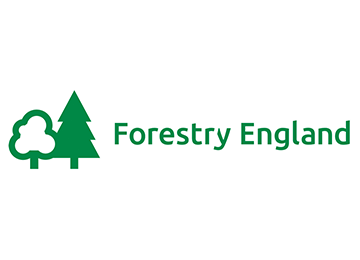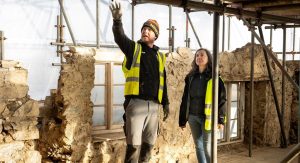The importance of ancient woodland for rare and threatened species
May 15, 2018
This article discusses the importance of ancient woodland for rare and threatened species and considerations for development proposals.
In the UK, our native woodlands are of huge importance for wildlife being home to many rare and threatened species. They also have recreational value and are of cultural, historical and landscape importance. Ancient Woodlands are defined as those which have existed since 1600AD. They take hundreds of years to establish and are irreplaceable habitats. This is the time of year when our native woodlands really start coming to life with the classic and familiar scene of bluebells forming carpets on the woodland floor.
The Government has recently issued a revised draft version of the National Planning Policy Framework (NPPF) which is currently open for consultation until 10th May 2018. Proposals within the revised version include greater protection for Ancient Woodland as follows:
‘development resulting in the loss or deterioration of irreplaceable habitats such as ancient woodland should be refused, unless there are wholly exceptional reasons and a suitable mitigation strategy exists.’
The Woodland Trust has been pushing for better protection for Ancient Woodlands via the planning system and together with the Association of Local Government Ecologists (ALGE) has put together a document titled ‘Planners Manual for Ancient Woodland and Veteran Trees’.
Not only does this document provide guidance for Local Planning Authorities in respect of planning policy development, it can also be used by developers as good practice when assessing sites and designing a development:
Where development proposals could potentially impact upon an ancient woodland good practice includes:
- Establishing the likelihood and type of impact;
- Implementing appropriate and proportionate mitigation and compensation;
- Providing adequate buffer zones between development and ancient woodland;
- Providing adequate evidence to support planning applications.
Best practice measures may include
- Adhering to BS 5837:2012: Trees in relation to design, demolition and construction;
- Non-invasive investigations into root zones and protection measures;
- Retaining and enhancing natural habitats around woodlands;
- Producing and funding an access management plan for the woodland or providing alternative natural greenspace to reduce recreational pressures;
- Sympathetic design of lighting to avoid light pollution;
- Measures to control noise, dust and other forms of water or airborne pollution;
- Woodland restoration;
- Introduction of sympathetic management for neglected woodlands or trees;
- A long-term monitoring and management plan.
As Ancient Woodland is an irreplaceable habitat, it cannot be compensated for by creating a new woodland and its highly unlikely that a development which results in deterioration of ancient woodland habitat would be approved. However, a well thought out design which seeks to avoid direct impacts on ancient woodland nearby together with a robust mitigation and ecological enhancement strategy is likely to be received more favourably.
More detailed information can be found by following the links below:
https://www.gov.uk/guidance/ancient-woodland-and-veteran-trees-protection-surveys-licences
https://www.woodlandtrust.org.uk/publications/2017/09/planning-for-ancient-woodland
You may also be interested in...
Trusted by

Avant Homes

Coreus

Dalcour Maclaren

Devon County Council

Ethical Power

Forestry England

Gilpin Demolition Group

Harron Homes

National Trust

Norse Group

PAFC

Plymouth City Council

South Hams District Council

South Tyneside Council

South West Water

Teinbridge Council

West Devon Borough Council

Westcountry Schools Trust
Expertise
Built for your sector

